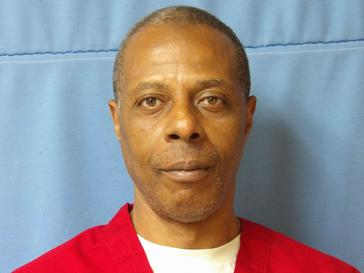
b: 1968
Willie Jerome Manning
Summary
Name:
Nickname:
FlyYears Active:
1992 - 1993Birth:
June 12, 1968Status:
Awaiting ExecutionClass:
MurdererVictims:
4Method:
ShootingNationality:
USA
b: 1968
Willie Jerome Manning
Summary: Murderer
Name:
Willie Jerome ManningNickname:
FlyStatus:
Awaiting ExecutionVictims:
4Method:
ShootingNationality:
USABirth:
June 12, 1968Years Active:
1992 - 1993Date Convicted:
November 7, 1994bio
Willie Jerome Manning was born on June 12, 1968. He grew up in Noxubee County, Mississippi. Raised in a working-class African American family, Manning grew up in a state with entrenched racial and economic inequality. By his late teens, he had already begun accumulating a criminal record that included theft and burglary convictions. In the late 1980s and early 1990s, Manning drifted in and out of prison and parole, living on the margins of society in and around Starkville, Mississippi, home of Mississippi State University.
murder story
On December 11, 1992, two students from Mississippi State University, Jon Steckler and Tiffany Miller, were reported missing after they were seen being forced into Miller's car in front of Steckler's fraternity house. About an hour later, a motorist found Steckler shot in the back of the head by the side of a road outside Starkville. He had also been run over by Miller's car, which was a Toyota MR2. When law enforcement arrived, they discovered Miller's body in nearby woods. She had been shot twice in the forehead and mouth, and the evidence suggested that she had been sexually assaulted. The following day, Miller's abandoned car was located near the university campus.
The investigation moved slowly at first, with the theory that the murders might be linked to a car burglary that happened the same morning. One of Steckler's fraternity brothers had reported his car stolen the night before, suggesting that the two students might have interrupted a burglary. Months passed before Willie Jerome Manning became a suspect. Prosecutors noted that Manning had a history of theft and was recently paroled after serving time for grand larceny and burglary. Despite this, there was no physical evidence tying him to the murders or the car burglary, and no weapon was recovered.
During the trial, witnesses claimed that Manning possessed stolen items, including a gas station token and a leather jacket that had been linked to the burglary. A similar token was found at the murder scene. Manning denied the charges and stated he had been at a club the night of the murders. Despite weak evidence, Manning was convicted of the murders after a jury deliberated for just one hour and was sentenced to death.
In 2013, Manning sought to have new DNA tests conducted on evidence from the case, claiming that at the time of his trial, technology was not available to analyze all physical evidence correctly. He pointed out that fingerprints from Miller's car did not match his or the victims'. Despite these arguments and testimonies from several witnesses asserting inconsistencies in the case, the Mississippi Supreme Court denied his claims.
About five weeks after the Steckler-Miller murders, on January 18, 1993, 90-year-old Emmoline Jimmerson and her 60-year-old daughter, Albertha Jordan, were killed during an apparent robbery. They had been severely beaten, and their throats were slit. Witness Kevin Lucious testified against Manning, claiming he saw him enter the victims' apartment. However, Lucious later recanted his testimony, stating it was coerced and false, leading to a new trial being granted for Manning in 2015.
After the new trial, significant evidence of prosecutorial misconduct showed that the key eyewitness's testimony had been fabricated, resulting in the charges against Manning being dropped. As of now, Manning's conviction from the Steckler-Miller murders remains contested, and he continues to fight against his death sentence.